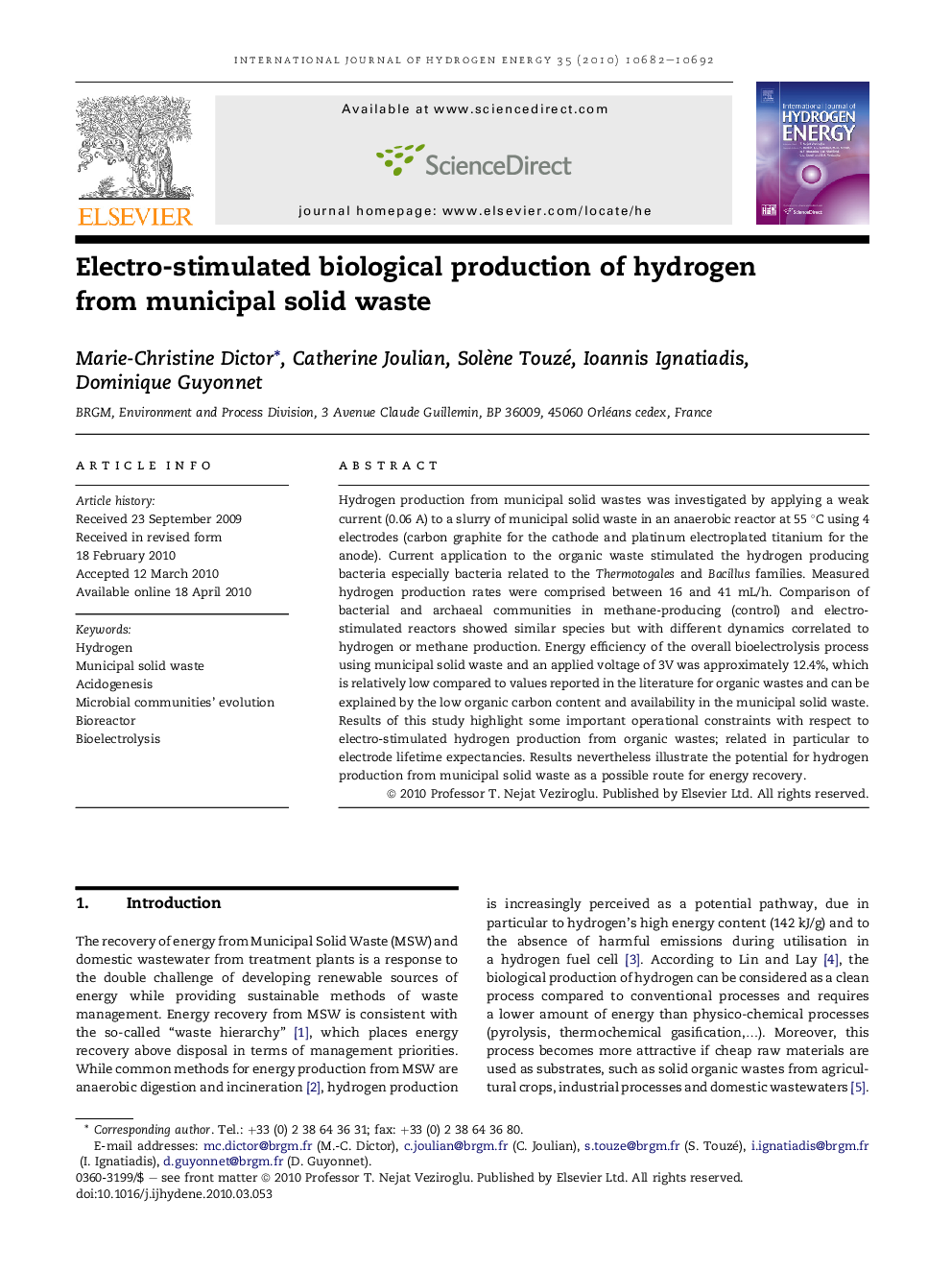| Article ID | Journal | Published Year | Pages | File Type |
|---|---|---|---|---|
| 1280137 | International Journal of Hydrogen Energy | 2010 | 11 Pages |
Hydrogen production from municipal solid wastes was investigated by applying a weak current (0.06 A) to a slurry of municipal solid waste in an anaerobic reactor at 55 °C using 4 electrodes (carbon graphite for the cathode and platinum electroplated titanium for the anode). Current application to the organic waste stimulated the hydrogen producing bacteria especially bacteria related to the Thermotogales and Bacillus families. Measured hydrogen production rates were comprised between 16 and 41 mL/h. Comparison of bacterial and archaeal communities in methane-producing (control) and electro-stimulated reactors showed similar species but with different dynamics correlated to hydrogen or methane production. Energy efficiency of the overall bioelectrolysis process using municipal solid waste and an applied voltage of 3V was approximately 12.4%, which is relatively low compared to values reported in the literature for organic wastes and can be explained by the low organic carbon content and availability in the municipal solid waste. Results of this study highlight some important operational constraints with respect to electro-stimulated hydrogen production from organic wastes; related in particular to electrode lifetime expectancies. Results nevertheless illustrate the potential for hydrogen production from municipal solid waste as a possible route for energy recovery.
